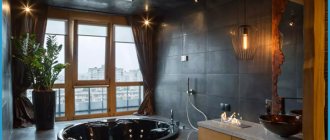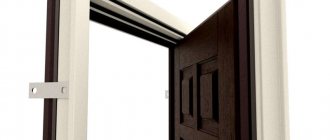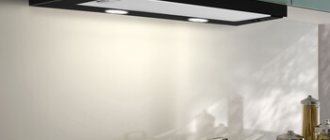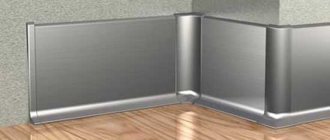For illumination, you can buy gas-discharge sodium lamps, the advantages of which are high efficiency, service life up to 20,000 hours and a suitable spectrum. But to operate such sources, a special ballast mechanism is needed, which increases the cost of the system. High price is the main reason for refusing metal halide sources, which are also well suited for supplementary lighting.
When choosing phytolamps, you should decide which phytolamp is better by comparing two types - fluorescent and LED. The advantages of the first type of sources are uniform illumination of the space without the need to install a large number of lamps. The disadvantages of fluorescent devices are the special coating that increases the price and the presence of dangerous mercury vapor inside.
LED sources should be chosen for their minimal power consumption and service life of more than 50,000 hours. And also - for the minimum heating temperature and high strength, due to the absence of filaments. The lighting created by the LED source is harmless to human eyes and creates conditions as close as possible to natural conditions for plant growth.
What is a phytolamp for plants
Plants require sufficient light for vegetative growth and the production of flowers, fruits and seeds. Each of these stages requires lighting with different characteristics. The sun's rays contain a full spectrum of radiation, but at home, in greenhouses and greenhouses, the lack of light energy must be compensated for by artificial lighting.
A phytolamp for plants is a special light source that emits the spectrum necessary for the growth and development of green mass, the composition closest to natural.
Lamp form factor
Before choosing a phytolamp for indoor plants, it is worth considering the presence of two main form factors - linear lamps and round lamps chambered for E27. The first type of source can be either LED or fluorescent. Among the advantages of linear models are the absence of heating, uniform distribution of light flux, simple installation and the ability to combine the spectrum. The disadvantages include the relatively large sizes.
In the ranking of the best linear type models is the Jazzway PPG T8I-900 AGRO 12W IP20 , a Chinese light source costing about 950-1000 rubles. Thanks to the ratio of red to blue light of 5:1, it is suitable for illuminating fruitful crops and seedlings installed on the windowsill. Supplied with cords and mounting kits, consumes 12 watts, lasts up to 25,000 hours.
Models chambered for E27 sockets are compact in size, powerful local illumination and simple spectrum combination capabilities. They are also relatively inexpensive and, if necessary, can be temporarily (until a new one is purchased to replace the failed one) replaced with conventional incandescent lamps. However, if you need diffused light, this option is not suitable. In addition, the spotlight heats up more, which means the lamp fails faster.
Among the best phytolamps you can find the Minifarmer Bicolor 36 WATT E27 , costing about 2,400 rubles. The 660 nm lamp is excellent for growing photocultures (flora that do not need sunlight at all), seedlings and adult plants at all stages. Service life - up to 50 thousand hours, energy consumption in normal mode - 17 W.
When choosing a suitable form factor, not only the pros and cons of each type are taken into account, but also the principle of placing plants under them. If they are located in the shape of a square or circle, it is worth choosing point sources for the E27 base. When arranged in the form of a rectangle or oval, the ideal option is linear lamps. It is also suitable for growing plants in a greenhouse - but not because of its shape, but because of its high power.
Sometimes, in an apartment or private house, another type of lamp is used - phytopanels. They are a system of several lamps and are characterized by simpler installation compared to the installation of individual sources and powerful local lighting. However, such power is usually only needed in greenhouses - or when growing plants in grow boxes. And the cost of such lamps is noticeably higher, and the cooling is worse than that of point and linear models.
Among the popular and relatively inexpensive phytopanels that are used at home, one can note the Seguin . The power of the lamp produced is 50 W, LEDs provide a full spectrum, and the temperature does not rise above 40-45 degrees. The dimensions are only 300x200x100 mm, and the price is 6,000 rubles.
How to choose a phytolamp
The optimal values for plants are wavelengths in the blue spectrum of 420-460 nm and in the red spectrum of 630-670 nm. The spectrogram on the lamp packaging shows the peak values; when selecting a lamp, this indicator is checked first.
The choice of shape depends on how much area needs to be illuminated. For spot lighting, plinth phytolamps are suitable; for shelves and window sills, it is more effective to choose a linear phytolamp.
The type of connection depends on where the device will be installed and determines ease of use. There are mobile options - battery-powered phytolamps, and stationary ones - base lamps, ready-made lamps with standard 220 V power supply, connected via a USB adapter or switchgear.
The durability of the luminaires is determined by the presence of built-in cooling radiators. They also take into account the ease of operation and maintenance and economic factors - feasibility, price of a phytolamp for plants and energy consumption.
Top phytolamps will allow you to evaluate the advantages and disadvantages of each type.
Power and number of lamps
Another way to choose a phytolamp involves calculating the required power of the source. When choosing, pay attention to the need of each plant for light, the height of the suspension and the diameter of the created circle or ellipse. Thus, a 36 W lamp provides good illumination at a distance of up to 40 cm in each direction when suspended at a height of 1.0 m. 7-10 W models, which are recommended to be hung at a distance of 20-30 cm from the plants, in this case create a circle with a diameter of about 30 centimeters. For 15-watt ones, these figures are about 35-40 cm and 50 cm, respectively.
The number of sources depends on the placement of plants. When choosing locations for installing light sources, it is worth taking into account the diameters of the circles being created and drawing up a rough diagram. All flowers and seedlings must fall into the “light zones”. So, for example, before choosing a phytolamp for seedlings on a windowsill, you can find out the number of lamps by its length. For 1 meter, 2 sources of 15 W are enough. A one and a half meter window sill requires the installation of three 15-watt lamps with an E27 base.
How to use a phytolamp
The duration of exposure to the phytolamp for indoor flowers and seeds will be different. In the first case, it is optimal to turn on the lamp for several hours in the morning and evening; at night the plants should rest. Flower and fruit formation may require more intense lighting. When the first shoots appear during seed germination, it is advisable to provide round-the-clock lighting.
Lamps that tend to heat up should be placed at a considerable distance from the plants so as not to cause a thermal burn.
Light spectrum
In order to properly grow indoor plants, you should pay attention to the spectrum created by the selected lamps. Depending on this indicator, several types of sources can be distinguished:
- Bicolor . They contain red and blue colors of the spectrum. An option favorable for seedlings, greenery grown on a windowsill, or mature indoor plants that are illuminated mainly by natural light.
- Multispectral . A combination of red, blue and warm white colors provides suitable lighting for plants with dense foliage. And also for already blooming indoor flowers.
- Full spectrum (Full Spectrum). Suitable for growing crops without sunlight. In spring, they are used to illuminate seedlings. The only negative is that the lamps irritate the eyes and are recommended for installation only in non-residential premises.
To compensate for the adverse effects on vision, Fullx2 models are produced. They are distinguished by the addition of white light, although they are more expensive than Full Spectrum sources. It is recommended to take such lamps for illumination of flowering plants in living rooms.
- Adviсe
The Best Mobile Apps for Plant Identification
When and how to use it correctly?
In order to understand how to install and turn on phytolamps, you need to calculate the time of organizing the illumination and its intensity. Flowers require different lengths of daylight:
- Plants that are in hibernation require light for 8-10 hours. These include Kalanchoe and Zamioculcas.
- Representatives of the Araceae family - spathiphyllum, anthurium, callas - love partial shade. Light of 2.5-3 thousand lux is enough for them.
- Geraniums and roses need twice as much lighting to develop normally.
- For orchids and chrysanthemums, a power of four to five thousand lux is enough.
Phytolamps are placed above the plants at a distance of twenty centimeters. If the flowers are different in height, then raise pots of low bushes onto stands, achieving uniformity in height. Expose to light when the plant is about to bloom. It is believed that female types of indoor crops need more light. Therefore, when connecting phytolamps, light-loving plants are placed in the middle. For them, the lighting intensity will be higher than for those standing on the edge.
In order not to destroy the plant and achieve maximum effect, there should be no more than seventy watts of light per square meter of area. Together with sunlight, lamps heal indoor flowers, making them green and strong.
Useful tips
At any time of the year, green pets will feel great if you give them the opportunity to catch light.
We share useful tips from experienced flower growers:
- Ordinary mirrors increase the intensity of artificial refreshment. They are installed on the side slopes of windows, which allows additional reflection of the sun's rays.
- Foil, white glossy fabric and reflectors also provide additional light radiation. They are positioned so that the light is reflected towards the indoor flowers.
- Tulle curtains placed between the greenery and the room help reflect diffused light. But if you hang tulle between the window and the plants, the intensity of natural light will decrease.
- Each flower has its own natural biorhythms, and in order not to disrupt the natural process, you need to create a schedule.
- A universal glow for green pets can be created by installing a matte screen.
- Illuminating dracaena and other tree-like plants with warm light will give them a compact shape.
- Proper alternation of day and night will allow plants to be healthy. For this reason, the lamp should be turned on 1-2 hours before dawn and turned off 2 hours after dusk.
Features of greenhouse supplementary lighting
For greenhouses, two options for illuminating seedlings are considered optimal:
1. LED lamps.
2. High pressure phytolamps.
For those plants that are expected to have a full growth cycle in the greenhouse, high-power LED models (from 50 W) should be installed. These can be both multispectral and bicolor types of phytolamps. The choice depends on the planted crop. For greenery, a two-spectrum lamp is sufficient. More complex crops will require green, yellow, orange flowers.
Powerful LED phytolamp model for greenhouses
The number of phytolamps for multispectral type plants is calculated based on the power. To illuminate 1 m2 of greenhouse you need a 40 W lamp. In growboxes, the power indicator increases to 150 W/m2.
Unlike ordinary people, it is more profitable for farmers to purchase expensive phytolamps and phytopanels. They will be able to quickly compensate for expenses, not only due to the harvested crop, but also due to the saved electricity.
Phytopanels will help save energy
The meaning and benefits of phytolamps
For flowers growing indoors, additional illumination with lamps must be carried out in winter. In summer there is enough natural lighting. The value of using lamps for plants is palpable. Together with light, plant leaves absorb chlorophyll, a source of energy. When it accumulates in the leaves, the process of photosynthesis occurs.
Light energy is converted into chemical energy. By absorbing carbon dioxide, the plant releases oxygen. Plant cells are protected from destruction due to the action of chlorophyll. Metabolism in plant cells accelerates, and the root system of the flower is strengthened.
Light energy promotes the production of phytohormones that stimulate the immunity of indoor flowers.
The advantage of using phytolamps in improving illumination is:
- effectiveness for normal plant development
- no heating
- ecological cleanliness
- durability
- energy saving
Phytolamps are simple and safe to use. They do not contain rays harmful to plants and are designed for use in rooms with high humidity. The light intensity can be adjusted.
Phytolamps, despite their high cost, have gained popularity and are widely used to illuminate greenhouses, flower shops and hard-to-reach corners of the house where indoor plants are located.
Manufacturer's choice
When choosing, you should focus on both price and brand. Usually these characteristics are related. Basically, the best phytolamps for plants can be found among the products of the following manufacturers:
• Minifermer , a company whose lamps are easy to set up and safe for the human eye; • Garden Show , a manufacturer of lamps, the advantages of which are a long service life and warranty - up to 5-8 years; • JazzWay AGRO , a brand that produces mainly bicolor phytolamps; • Navigator , a company that has a large number of models with an average power of 15 W.
The advantages of purchasing products from well-known manufacturers are long warranty periods and high reliability. Attempts to save money by buying models of unknown brands often lead to the impossibility of returning or replacing them, even if they fail within a year after purchase. A phytolamp from a reliable brand that fails through no fault of the user can be replaced even after 2 years. And the warranty for some Garden Show models reaches 3-4 years.
Top 10 best phytolamps of 2021 for home
LED phytolight Chiston-S
Compact luminaire for multi-tier and hydroponic installations. Due to minimal heat generation, you can place it almost close to the leaves without fear of burns. Suitable for low growing plants. The herbal kit includes all the necessary stands and adapters for the shelf arrangement system. Operating life – 50,000 hours. The number of LEDs is 72 spectral: 56 red and 16 blue. It should be installed at a height of 5 to 30 cm. Can be purchased for 744 rubles.
LED phytolight Chiston-S
Advantages:
- Does not cause burns in close proximity;
- Economical energy consumption.
Flaws:
- Suitable for 1-2 plants.
Phytolamp Health treasure “GROWING lamp 16 W”
It is small in size, easily changes height and rotates 360 degrees, so it can be used even in conditions of limited space and a complete lack of natural light. Fireproof and not subject to overheating. It has a pleasant red-blue spectrum for humans, while not inferior to its function of promoting active vegetation and the development of a powerful root structure. Forms healthy immunity in plants. The lamp contains 48 full-spectrum LEDs. Service life – 30,000 hours. Works without interruption in rooms with air conditions up to 85% humidity. The purchase will cost 1,700 rubles.
Phytolamp Health treasure “GROWING lamp 16 W”
Advantages:
- Convenient switch;
- Easy to assemble and does not require additional equipment;
- Economical in consumption;
- Effective at night.
Flaws:
- Not very reliable design;
- Small area coverage.
Phyto lamp Growtech 48W
The Growtech company specializes in lighting devices not only for growing home flowers, but also for lighting agricultural complexes. This type is used for growing seedlings, greenery, and decorative flowers. When working at 12-16 hours, unprecedented growth and healthy strengthening of sprouts is observed, fruiting accelerates by 2 times.
It can be positioned horizontally and vertically to surfaces or tied to special cable mounts.
Works for 50,000 hours, illumination angle 80 degrees. Price – 5,990 rubles.
Phyto lamp Growtech 48W
Advantages:
- Wide coverage of territory;
- Rapid growth and development of plants.
Flaws:
- Not suitable for complex agricultural crops, such as corn;
- Cables are not included.
LED phytolamp “Garden Show”, 15 W.
The lamp has a compact size. Equipped with 15 LEDs: 12 red and 3 blue, which are responsible for improved photosynthesis and increases the growth and development of the plant as a whole. It has a pleasant pink-violet spectrum that is not harmful to human eyes. Service life – 40,000 hours. Warranty – 2 years. You can place it close to the plant without fear of burns. Costs 2,800 rubles.
LED phytolamp “Garden Show”, 15 W.
Advantages:
- Does not contain toxic substances;
- Resistant to damage due to durable housing;
- Minimal heat generation;
- Suitable for growing seedlings from scratch.
Flaws:
- Expensive price;
- Small lighting area.
Phytolamp Minifarmer 36 Watt E27 (Full Spectrum)
The composition includes diodes of the green, blue and red spectrum. Thanks to this combination, the lamp emits a pleasant, slightly pinkish tint that is pleasing to the human eye. The dispersion angle is 90 degrees. The light is perfect for plants at different stages, creating a more versatile apparatus. Economical and does not require frequent replacement. It does not heat up, so plants do not require frequent watering. Costs 3,200 rubles.
Phytolamp Minifarmer 36 Watt E27 (Full Spectrum)
Advantages:
- Economical;
- Universal;
- Pleasant calm color;
- Does not heat up;
- Compact;
- Convenient design.
Flaws:
- High price;
- Not suitable for seedlings from scratch.
LED lamp SPB-T8-Fito linear
Ideal for the beginning gardener. Due to its linear shape, it is suitable for germinating seedlings or indoor flowers. Even the most difficult-to-care plants grow, as the spectrum is specially designed to strengthen and nourish the stem and emerging tops. The device produces almost no heat, which significantly saves watering. Plants practically do not get sick.
Dispersion angle – 120 degrees. Operational performance – up to 30,000 hours.
The kit includes two lamps, mounts and conductors to connect both lamps together. As well as the necessary suspensions, fastenings, thin but strong cables. Can be attached to the ceiling or to special mounting brackets. Price – 900 rubles
LED lamp SPB-T8-Fito linear
Advantages:
- The result is already in a month;
- The seedlings are strong and do not stretch;
- Energy saving;
- Suitable for beginner.
Flaws:
- Light that is unpleasant to the eye;
- Short cord.
Phyto-lamp Growtech Sunlight 42W
Suitable for greenhouses and growing home flowers. The backlight is close to sunlight. It has a fairly high level of protection, so it can be used in rooms with high humidity.
It can be either suspended using cables or fishing lines, or attached to vertical and horizontal surfaces. Can be used for additional illumination and to completely replace natural lighting. Costs about 4,490 rubles.
Service life – 40,000 hours. 2 year warranty.
Phyto-lamp Growtech Sunlight 42W
Advantages:
- Suitable for different types of seedlings;
- Wide coverage of territory;
- Minimum heating during long operation.
Flaws:
- Cable not included;
- Small cord.
Phytolamp Flora Lamps full spectrum E27 48 w
It is a lamp with a wide spectrum and a wide angle of illumination. Suitable for the development of all types of plants. Can be screwed into any socket, preferably on open lamps, so that the heat sink can pass freely. The beam angle is 120 degrees, which is much higher than some lamps with lenses. The lighting is a mixture of warm red, blue and cool white, resulting in a soft pink glow that does not bother the human eye. Price – 2000 rubles.
Phytolamp Flora Lamps full spectrum E27 48 w
Advantages:
- Does not require complex equipment;
- Long service life;
- Amenable to minimal heat;
- Wide lighting angle;
- Average price.
Flaws:
- Does not have a guarantee.
LED phytolight Geniled Element Agro 0.5x140W Transparent
Phytolighting from this company promotes the accelerated development of sprouts, their flowering and fruiting, completely compensating for the lack of light and significantly increasing productivity in winter.
It consists of 24 LEDs, of which 18 are red and 6 are blue, thereby giving preference to more universal growth and development of the root system and fruit ripening, allowing photosynthesis to develop precisely in these intervals of the spectrum.
The body is made of aluminum alloy, which makes it resistant to mechanical damage. Service life – 50,000 hours. Warranty – 3 years. Price – 4,850 rubles.
LED phytolight Geniled Element Agro 0.5x140W Transparent
Advantages:
- Resistant to voltage surges;
- Overload, short circuit and overheat protection;
- Long service life;
- Increased impact resistance;
- Resistant to dust and splashing water;
- Does not contain toxic materials, environmentally friendly;
- There is no noise during operation.
Flaws:
- High price.
LED phytolight FITO 05-50 (WST 05-001-70-3)
It is used both for growing home flowers and for hydroponics. Suitable for seedlings, resulting in healthy plants with developed roots, dense leaves and strong stems at any time of the year. The dispersion angle extends to 1.5 sq.m. It works in two modes - vegetation and fruiting.
During the growing season, growth is effectively increased, the stem is strengthened and healthy mass is gained. The plant does not even need additional nitrates.
In the fruiting mode, a balanced mode is normalized. It is especially effective after the growing season, when a grown and strengthened plant needs to adjust its further daily rhythm, close to natural.
The lamp contains 72 LEDs, which have reduced heat generation. Service life – 100,000 hours. 2 year warranty. The design has good heat dissipation, increasing the service life. There is no cooler, so the installation is silent for the entire period of operation, increasing its reliability. Price – 2500 rubles.
LED phytolight FITO 05-50 (WST 05-001-70-3)
Advantages:
- Silent;
- Doesn't overheat;
- Economical;
- Used for all types of plants.
Flaws:
- Not found.











